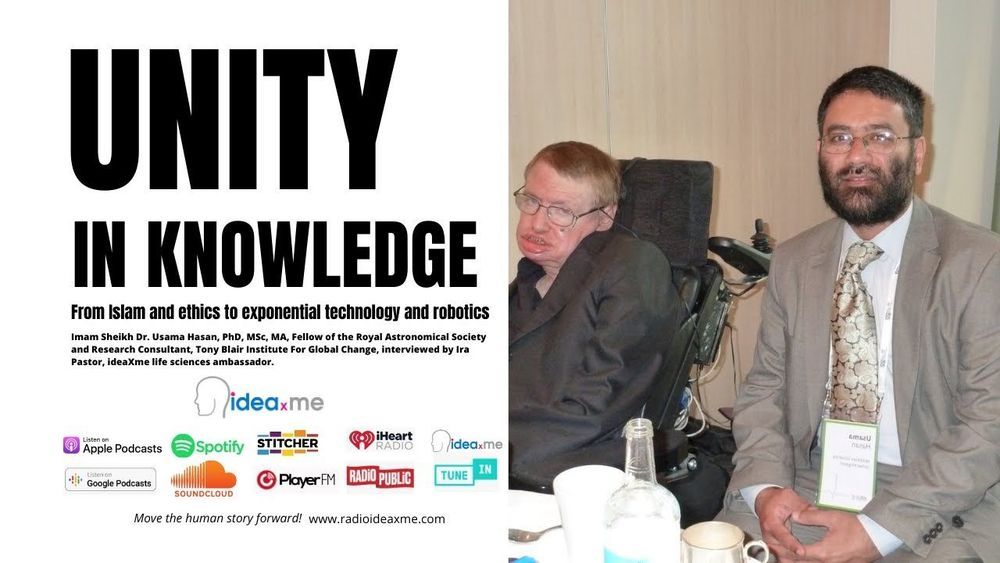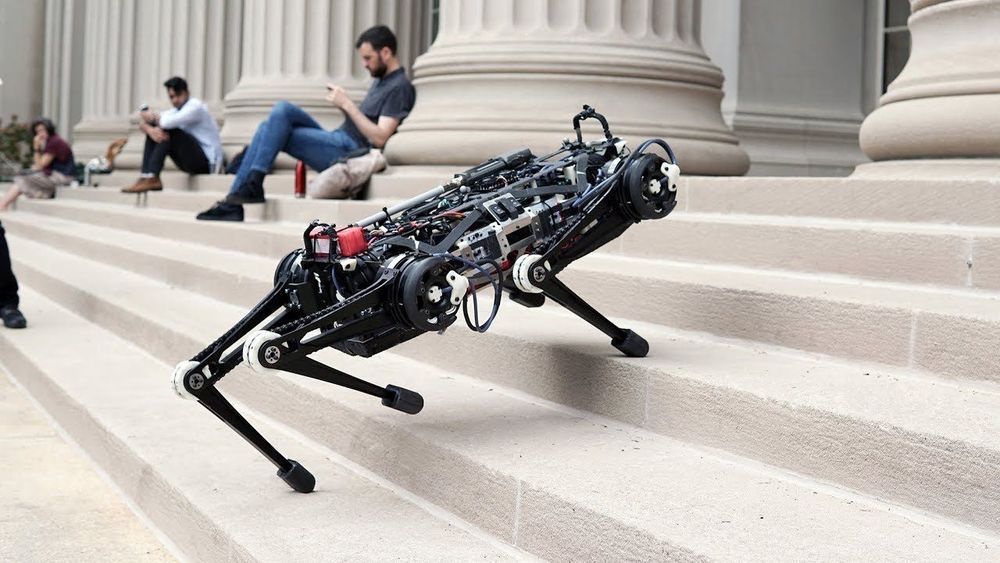Sep 10, 2020
UK mathematician wins richest prize in academia
Posted by Genevieve Klien in categories: innovation, mathematics
Martin Hairer takes $3m Breakthrough prize for work a colleague said must have been done by aliens.
Martin Hairer takes $3m Breakthrough prize for work a colleague said must have been done by aliens.
A heptagonal-lattice superconducting circuit, and the mathematics that describe it, provide tools for studying quantum mechanics in curved space.
According to John Wheeler’s summary of general relativity, “space-time tells matter how to move; matter tells space-time how to curve.” How this relationship plays out at the quantum scale is not known, because extending quantum experiments to curved space poses a challenge. In 2019, Alicia Kollár and colleagues at Princeton University met that challenge with a photonic circuit that represents the negatively curved space of an expanding universe [1]. Now, Igor Boettcher and colleagues at the University of Maryland, College Park, describe those experiments with a new theoretical framework [2]. Together, the studies offer a toolkit for studying quantum mechanics in curved space that could help answer fundamental questions about cosmology.
In a universe that expands at an accelerating rate, space curves away from itself at every point, producing a saddle-like, hyperbolic geometry. To project hyperbolic space onto a plane, Kollár’s team etched a centimeter-sized chip with superconducting resonators arranged in a lattice of heptagonal tiles. By decreasing the tile size toward the edge of the chip, the researchers reproduced a perplexing property of hyperbolic space: most of its points exist on its boundary. As a result, photons moving through the circuit behave like particles moving in negatively curved space.
A pair of Danish computer scientists have solved a longstanding mathematics puzzle that lay dormant for decades, after researchers failed to make substantial progress on it since the 1990s.
The abstract problem in question is part of what’s called graph theory, and specifically concerns the challenge of finding an algorithm to resolve the planarity of a dynamic graph. That might sound a bit daunting, so if your graph theory is a little rusty, there’s a much more fun and accessible way of thinking about the same inherent ideas.
Going as far back as 1913 – although the mathematical concepts can probably be traced back much further – a puzzle called the three utilities problem was published.

Discussing STEM, the future, and transhumanism with an islamic scholar / scientist.
Ira Pastor, ideaXme life sciences ambassador interviews Imam Sheikh Dr. Usama Hasan, PhD, MSc, MA, Fellow of the Royal Astronomical Society and Research Consultant at the Tony Blair Institute For Global Change.

MIT’s Cheetah 3 robot can now leap and gallop across rough terrain, climb a staircase littered with debris, and quickly recover its balance when suddenly yanked or shoved, all while essentially blind.
Watch more videos from MIT: https://www.youtube.com/user/MITNewsOffice?sub_confirmation=1
Scientists have developed the most accurate computing method to date to reconstruct the patchwork of genetic faults within tumors and their history during disease development, in new research funded by Cancer Research UK and published in Nature Genetics.
Their powerful approach combines artificial intelligence with the mathematical models of Charles Darwin’s theory of evolution to analyze genetic data more accurately than ever before, paving the way for a fundamental shift in how cancer’s genetic diversity is used to deliver tailored treatments to patients.
Applying these new algorithms to DNA data taken from patient samples revealed that tumors had a simpler genetic structure than previously thought. The algorithms showed that tumors had fewer distinct subpopulations of cells, called “subclones,” than previously suggested. The scientists, based at The Institute of Cancer Research, London, and Queen Mary University of London, could also tell how old each subclone was and how fast it was growing.
Three mathematicians have resolved a fundamental question about straight paths on the 12-sided Platonic solid.
 Abstract: Advances in high speed imaging techniques have opened new possibilities for capturing ultrafast phenomena such as light propagation in air or through media. Capturing light-in-flight in 3-dimensional xyt-space has been reported based on various types of imaging systems, whereas reconstruction of light-in-flight information in the fourth dimension z has been a challenge. We demonstrate the first 4-dimensional light-in-flight imaging based on the observation of a superluminal motion captured by a new time-gated megapixel single-photon avalanche diode camera. A high resolution light-in-flight video is generated with no laser scanning, camera translation, interpolation, nor dark noise subtraction. A machine learning technique is applied to analyze the measured spatio-temporal data set. A theoretical formula is introduced to perform least-square regression, and extra-dimensional information is recovered without prior knowledge. The algorithm relies on the mathematical formulation equivalent to the superluminal motion in astrophysics, which is scaled by a factor of a quadrillionth. The reconstructed light-in-flight trajectory shows a good agreement with the actual geometry of the light path. Our approach could potentially provide novel functionalities to high speed imaging applications such as non-line-of-sight imaging and time-resolved optical tomography.
Abstract: Advances in high speed imaging techniques have opened new possibilities for capturing ultrafast phenomena such as light propagation in air or through media. Capturing light-in-flight in 3-dimensional xyt-space has been reported based on various types of imaging systems, whereas reconstruction of light-in-flight information in the fourth dimension z has been a challenge. We demonstrate the first 4-dimensional light-in-flight imaging based on the observation of a superluminal motion captured by a new time-gated megapixel single-photon avalanche diode camera. A high resolution light-in-flight video is generated with no laser scanning, camera translation, interpolation, nor dark noise subtraction. A machine learning technique is applied to analyze the measured spatio-temporal data set. A theoretical formula is introduced to perform least-square regression, and extra-dimensional information is recovered without prior knowledge. The algorithm relies on the mathematical formulation equivalent to the superluminal motion in astrophysics, which is scaled by a factor of a quadrillionth. The reconstructed light-in-flight trajectory shows a good agreement with the actual geometry of the light path. Our approach could potentially provide novel functionalities to high speed imaging applications such as non-line-of-sight imaging and time-resolved optical tomography.
AI tools are shaping next-generation theorem provers, and with them the relationship between math and machine.